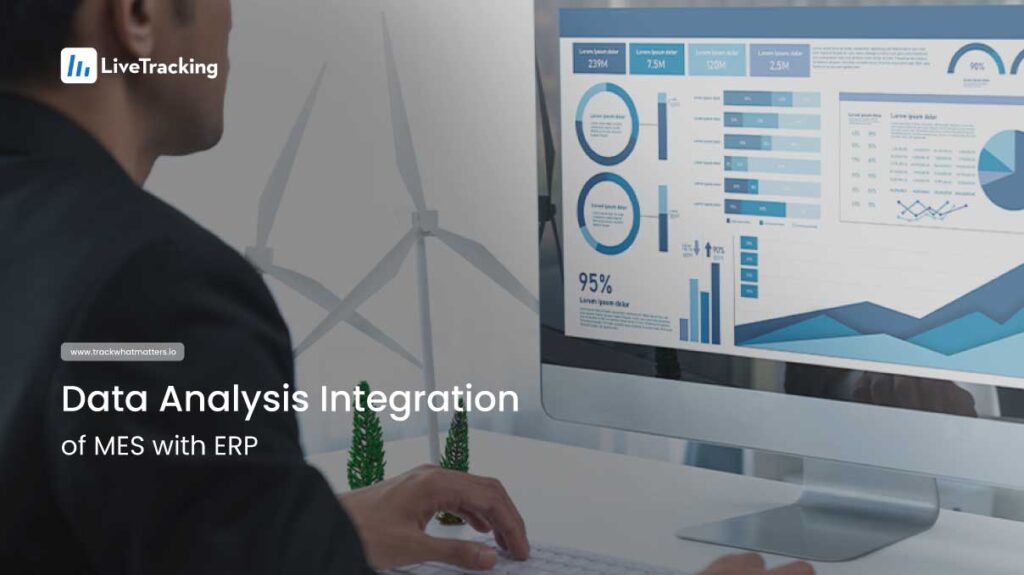MES Implementation Strategies: A Step-by-Step Guide
Unlock the full potential of your manufacturing operations with our comprehensive guide on MES implementation strategies.
Manufacturing Execution Systems (MES) are essential for improving manufacturing efficiency, but their effectiveness depends heavily on integration with Enterprise Resource Planning (ERP) and other systems. Data analysis plays a crucial role in tracking performance metrics and optimizing MES performance. Key Performance Indicators (KPIs) like Overall Equipment Effectiveness (OEE), production cycle time, and inventory turnover help manufacturers identify inefficiencies and make data-driven improvements.

Future trends in MES include Industry 4.0, IoT, AI-driven predictive maintenance, and cloud-based solutions, making it imperative for companies to embrace advanced analytics. A well-planned MES implementation involves staggered integration, leveraging middleware, and involving IT teams early. Continuous performance monitoring, real-time data analytics, and visualization tools help optimize the system for better decision-making and adaptability.
LiveTracking offers specialized MES solutions that empower manufacturers with real-time data tracking, predictive analytics, and seamless system integration. By scheduling a demo, companies can enhance their manufacturing operations and maximize equipment efficiency.
Successful MES implementation is highly dependent on its capability to integrate with existing systems, especially Enterprise Resource Planning (ERP) systems. This integration allows for a seamless flow of information between planning and execution layers, ensuring that all departments operate using aligned data.
Effective integration not only enhances operational visibility but also helps in optimizing supply chain management. Organizations need to adopt a staggered integration approach whereby they first test the MES in a limited environment before rolling it out across the entire organization. This method helps identify potential issues without impacting the overall production operations. Moreover, leveraging APIs and middleware solutions can facilitate smoother interactions between MES and other systems, allowing for real-time data exchange and reducing the likelihood of errors. It’s also crucial to involve IT teams early in the process to ensure that the necessary infrastructure is in place to support the integration and to address any technical challenges that may arise during the deployment phase.
Once an MES is in place, measuring its effectiveness is crucial for continuous improvement. Key Performance Indicators (KPIs) serve as benchmarks for assessing the performance of manufacturing operations and the effectiveness of the MES.
KPIs such as Overall Equipment Effectiveness (OEE), production cycle time, and inventory turnover provide valuable insights into areas requiring enhancement. Regularly tracking these metrics enables organizations to identify trends and make data-driven decisions that foster operational improvements. For instance, OEE not only highlights equipment performance but also sheds light on the effectiveness of maintenance practices and workforce productivity. By breaking down OEE into its components—availability, performance, and quality—manufacturers can pinpoint specific inefficiencies and take targeted actions to address them. Furthermore, integrating real-time data analytics into the KPI monitoring process can enhance responsiveness and agility, allowing organizations to adapt swiftly to changing production demands.
Looking ahead, several trends can shape the future of MES implementation. The growing emphasis on Industry 4.0 and the Internet of Things (IoT) will drive further innovation within MES technologies, allowing for more advanced analytics, automation, and machine learning capabilities.
Additionally, Cloud-based MES solutions are emerging, offering flexibility and scalability while reducing the burden of IT infrastructure. These trends underscore the necessity for organizations to stay abreast of technological advancements to derive maximum value from their MES investments. The integration of artificial intelligence (AI) into MES systems is particularly noteworthy, as it can facilitate predictive maintenance, optimize supply chain management, and enhance decision-making processes. As manufacturers increasingly adopt smart technologies, the ability to harness vast amounts of data for actionable insights will become a pivotal competitive advantage.
An effective execution of the MES strategy involves thorough testing and validation of the system before full deployment. Manufacturers should establish a project team that includes representatives from IT, operations, and relevant stakeholders to oversee the implementation.
During this phase, it is essential to monitor progress, ensuring the defined goals are being met, and adjustments are made when necessary. Agile methodologies can also be beneficial, allowing organizations to iterate quickly and incorporate feedback throughout the implementation process. Additionally, fostering a culture of collaboration and communication among team members can significantly enhance the implementation experience. Regular check-ins and updates can help keep everyone aligned and motivated, while also ensuring that any roadblocks are addressed promptly. Engaging end-users early in the process can also provide valuable insights and foster a sense of ownership and commitment to the new system.

The final stage of MES implementation involves continuous monitoring and optimization. Organizations must commit to regular reviews of the MES performance metrics and KPIs to identify areas of improvement and further streamline processes.
This ongoing evaluation allows companies to adapt to new challenges and leverage advancements in technology effectively. Engaging in regular training and refreshing knowledge among staff members will also ensure that everyone remains aligned with the goals of the MES. Moreover, establishing a feedback loop where employees can share their experiences and suggestions can lead to innovative solutions and foster a culture of continuous improvement. By utilizing dashboards and visualization tools, teams can gain a clearer understanding of performance trends and make informed decisions that drive operational excellence. This proactive approach not only enhances productivity but also cultivates a resilient manufacturing environment capable of thriving amidst industry fluctuations.
Ready to elevate your manufacturing execution system to the next level? LiveTracking is here to guide you through a transformative journey with our specialized solutions. By scheduling a quick discovery call, you can unlock the potential for a remarkable increase in equipment efficiency. Experience the full capabilities of our system with a free demo trial and see firsthand how LiveTracking simplifies the tracking of critical statistics, ensuring your manufacturing operations thrive. Don’t miss this opportunity to optimize your MES performance. Schedule a quick Demo call today and let’s explore the opportunities within the next weeks!
1. Why is MES integration with ERP systems important?
MES integration with ERP ensures a seamless flow of information, allowing better planning and execution of manufacturing operations.
2. What are the key KPIs for measuring MES success?
Essential KPIs include Overall Equipment Effectiveness (OEE), production cycle time, and inventory turnover, which help identify inefficiencies.
3. How can real-time data analytics improve MES performance?
Real-time analytics provide instant insights, enabling manufacturers to respond quickly to issues, optimize workflows, and improve decision-making.
4. What role does AI play in MES optimization?
AI enhances predictive maintenance, supply chain management, and quality control, leading to increased efficiency and reduced downtime.
5. Why choose LiveTracking for MES solutions?
LiveTracking offers real-time tracking, predictive analytics, and cloud-based solutions to maximize equipment efficiency and operational performance.
Share
Table of Content
Stay Up-to-Date
Get LiveTracking news in your inbox.
Error: Contact form not found.
By submitting this form I have read and acknowledged the Privacy Policy.
The latest industry news, interviews, technologies, and resources.
Unlock the full potential of your manufacturing operations with our comprehensive guide on MES implementation strategies.
The effective use of real-time data analysis in manufacturing is made possible by IoT, edge computing, and AI-powered analytics.